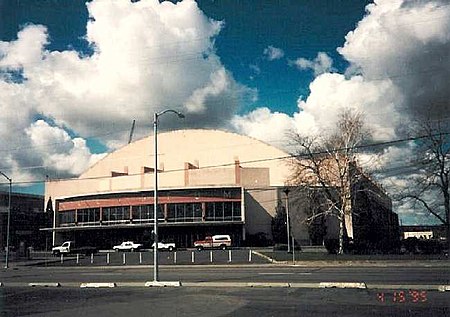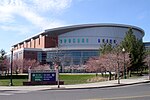Spokane Coliseum

Spokane Coliseum (nicknamed The Boone Street Barn) was an indoor arena in the northwestern United States, located in Spokane, Washington. Opened in late 1954, it had a seating capacity of 5,400. After more than a year of construction, the arena was dedicated on December 3, 1954, in a program headlined by Metropolitan Opera soprano Patrice Munsel, a Spokane native. The largest crowds in its early years were for a Catholic Mass and stage shows by Lawrence Welk and Liberace, respectively.It was host to a number of teams, including the Spokane Chiefs of the Western Hockey League (WHL). The arena served as the home of the Gonzaga University basketball team, from its entry into NCAA University Division (now Division I) competition in 1958, until the opening of the on-campus John F. Kennedy Memorial Pavilion in 1965, later the Charlotte Y. Martin Centre. The Bulldogs returned to the Coliseum in 1979, their first year in the West Coast Athletic Conference, for conference home games only, then returned to Kennedy Pavilion for the 1980–81 season. They continued to use the Coliseum for occasional home games until its demise. The venue was used for some events of the 1990 Goodwill Games.
Excerpt from the Wikipedia article Spokane Coliseum (License: CC BY-SA 3.0, Authors, Images).Spokane Coliseum
West Dean Avenue, Spokane
Geographical coordinates (GPS) Address Nearby Places Show on map
Geographical coordinates (GPS)
| Latitude | Longitude |
|---|---|
| N 47.6675 ° | E -117.422 ° |
Address
Spokane Arena
West Dean Avenue
99201 Spokane
Washington, United States
Open on Google Maps











